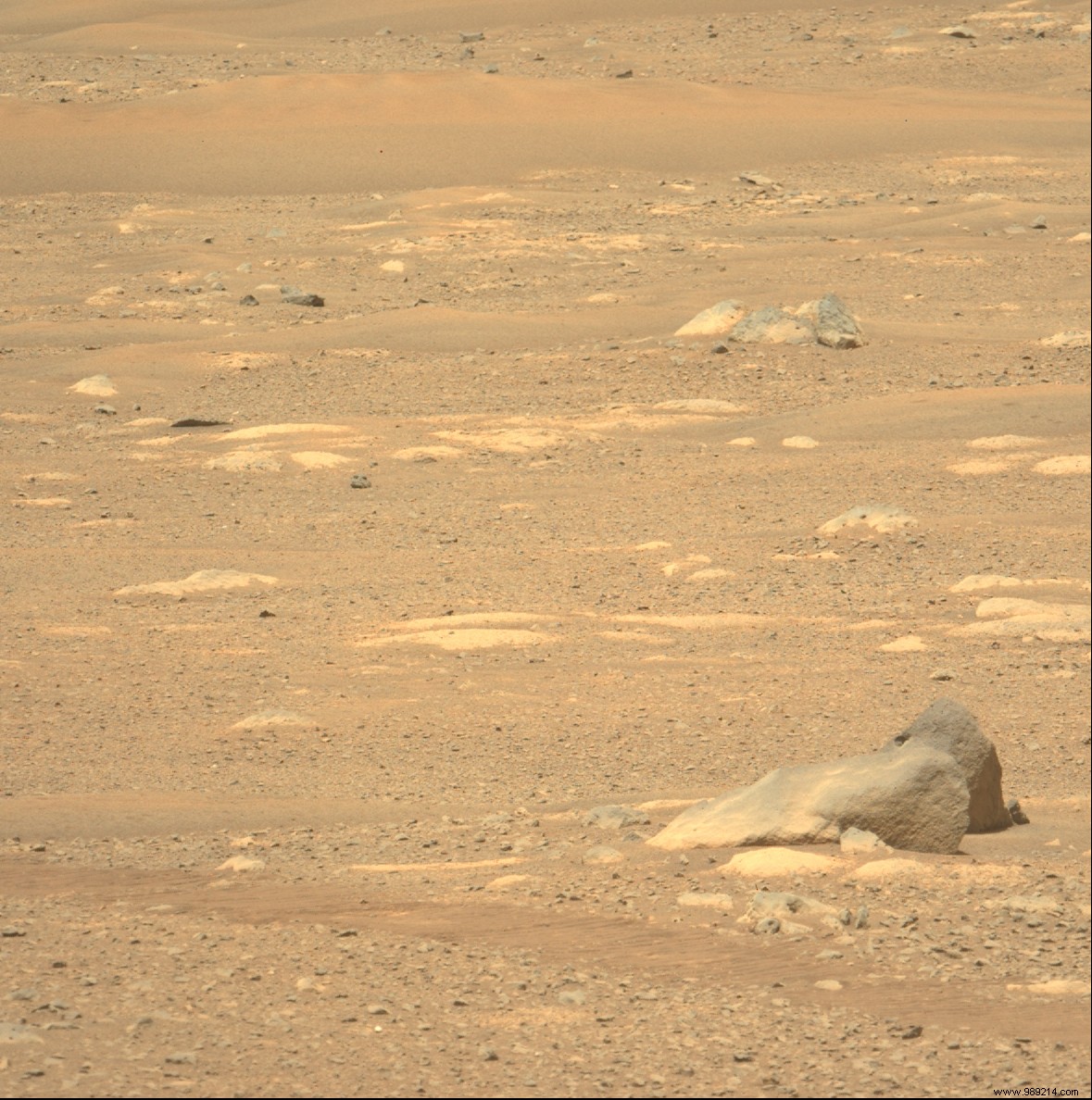The Perseverance rover has just made history again by successfully producing a small amount of oxygen on the planet Mars. This new feat could pave the way for larger devices capable of supporting a human presence on the Red Planet.
On Mars, all eyes have been on Ingenuity for several days, the first vehicle to achieve powered flight on another planet. However, let's not forget Perseverance, placed at a good distance to document the exploits of its companion. If the main mission of the rover is to probe evidence of past life on Mars, the engineers have also placed in its luggage a small box also responsible for marking history.
This little box is the Mars Oxygen In-Situ Resource Utilization Experiment (or MOXIE). Its goal is to transform part of the red planet's carbon dioxide-rich atmosphere into oxygen . Like Ingenuity, it is a demonstration of technology that could eventually allow future Mars explorers to breathe, but also to fill the oxygen tanks they will need to return to Earth.
As a demonstration of technology, this little golden box will only work occasionally. In addition, the instrument requires a significant energy input in order to heat a key element of the experiment to around 800°C.
The idea is that each time MOXIE runs, the instrument will spend about two hours warming up and then produce oxygen for about an hour. This process will use most of Perseverance's power supply for the day.

To operate, the instrument must extract carbon dioxide from the thin Martian atmosphere, then separate the carbon from the oxygen. MOXIE then produces carbon monoxide gas as a by-product (a gas that dissipates quickly).
When operating, MOXIE will not have to use all the carbon dioxide absorbed, at the risk of producing carbon soot instead of carbon monoxide, which could clog its instruments .
Another important point:if the instrument does not receive enough electricity, the reaction will be reversed. In other words, MOXIE will work like a fuel cell. Instead of drawing oxygen from CO2, it will attempt to produce CO2 from oxygen. Since there is no source of oxygen on Mars, it will therefore begin to extract the infamous gas from the anode side of the device, which will break down the material.
Note that MOXIE will only attempt to produce oxygen on a small scale. And for good reason, Perseverance offers only 110 watts of power available for the entire rover .

But will this case succeed in its mission? According to NASA, the answer is yes! The Perseverance box would indeed have succeeded in converting part of the carbon dioxide in the Martian atmosphere into oxygen for the first time. It is also the first time that such a feat has been attempted and succeeded on another planet.
The demonstration took place on April 20, the day after Ingenuity's exploit. During this first test, MOXIE would have produced five grams of oxygen , enough to allow an astronaut carrying out a normal activity to breathe for approximately ten minutes.
NASA engineers will now run more tests and attempt to ramp up production of the case. If successful, we could then imagine much larger technology launched before the first manned launches to Mars. That way, we could then produce enough oxygen to make sure the astronauts could get home, even before they left Earth.